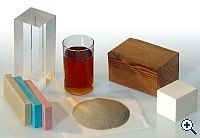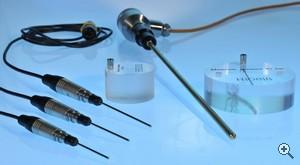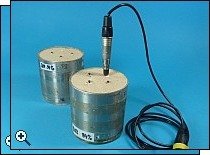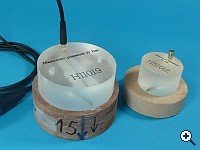Application range
 TK04 is designed for testing solids (like soil samples, rock, plastics, glass, ceramics, construction materials, wood or foodstuffs), powder, fragments, pastes, gels and viscous liquids, and for in-situ tests in the measuring range of 0.1 to 10 W/mK. The instrument covers a temperature range of -25° to 125°C. All probes can be used for wet materials.
TK04 is designed for testing solids (like soil samples, rock, plastics, glass, ceramics, construction materials, wood or foodstuffs), powder, fragments, pastes, gels and viscous liquids, and for in-situ tests in the measuring range of 0.1 to 10 W/mK. The instrument covers a temperature range of -25° to 125°C. All probes can be used for wet materials.
Sample shape and size
Samples can be of any size and shape as long they meet the minimum size requirements. The minimum diameter according to ASTM D5334-08 is 40 mm, the minimum length is the probe length plus 20%. The higher the thermal conductivity, the larger is the necessary sample size. For soil samples, the ASTM requires larger sample dimensions. Details can be found in the technical specification of the probes and in the application notes (PDF) Choosing a suitable probe, Sample preparation and Testing thermal conductivity of soil samples.
Probes
Different probe types are available for use with TK04 which can be connected to the same instrument. All probes have a rugged design, are protected against moisture and are maintenance-free. Heating device and temperature sensor are embedded in a stainless steel tube. The probes come pre-calibrated, the users are not required to perform calibration tests themselves.
Please see the technical specification for a summary of all available probes including their measuring range, temperature range and accuracy.
Choosing a suitable probe for your application
For laboratory measurements, with few exceptions all probe types can be used for all sample materials. In most cases you can choose a probe by temperature range (see the technical specification of the probes) and by shape and size of the available sample pieces, or by sample preparation possibilities.
For in-situ tests always the Field VLQ should be used, the smaller laboratory probes are not adequate for this purpose.



